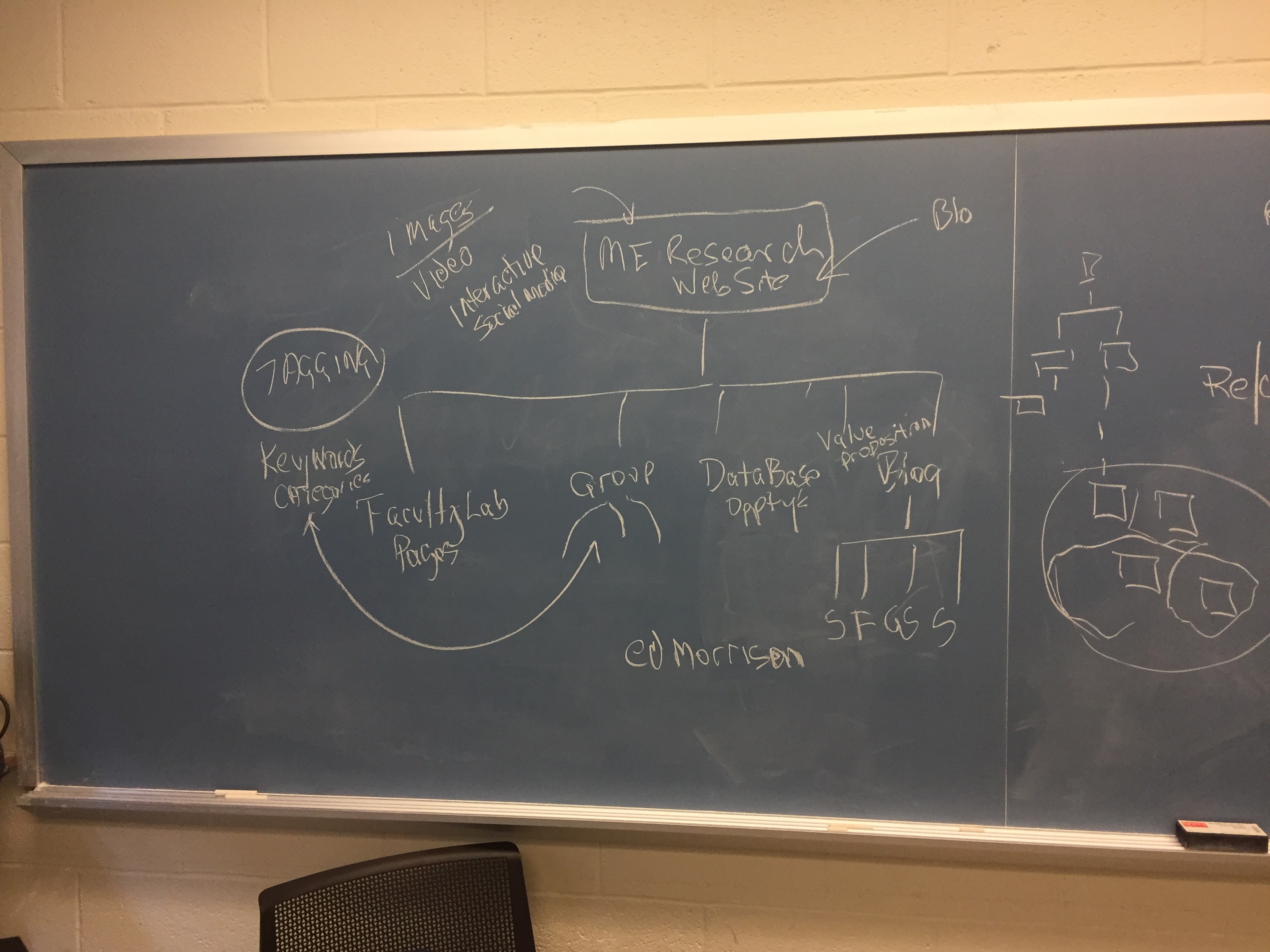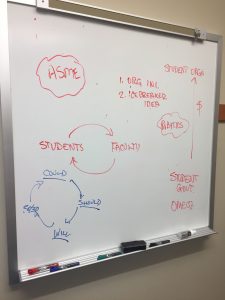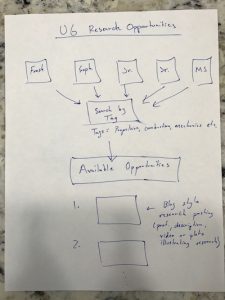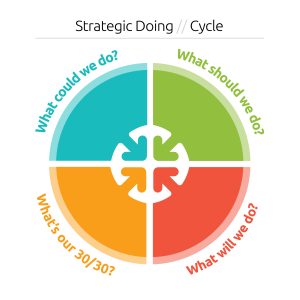We had a remarkable session yesterday. Based on commitments of two weeks ago, faculty members invited some students, and they really changed the dynamic of 30 minute Strategy Sprint. we are currently exploring how to design a web-based platform to expose undergraduates to research opportunities within Mechanical Engineering.
Designing a wire frame
The first step is to outline a “wireframe” of the web platform. Identifying the categories of content we want to include. At the same time, we want to and characterize the “look and feel” of the site. In this way, we can provide the designer with clear guidance. Chris Goldenstein has already contributed a good wireframe on which we are building.
Videos of students for students
Our student team members brought up the importance of sharing the experiences of undergraduates. We outlined how we might create some videos, based on the experiences of students who have seen the value of research. These videos could also provide a clear explanation of what is involved with research.
Got ideas for videos? e-mail edmorrison@purdue.edu
Capturing the right look and feel
We need a web platform that has the right look and feel. Engaging. Useful. Fast. Right now it takes real digging to find out what faculty are engaged in research. There’s no easy way for students to identify research opportunities. (There may be a good model for us to copy from Discovery Park, though.)
Organizing research with categories and tags
We are also working on the categories and tags that we will use to organize the site. Arezoo has suggested these categories
- Acoustics and Noise Control
- Bioengineering
- Combustion, Energy Utilization, and Thermodynamics
- Design
- Fluid Mechanics & Propulsion
- Heat Transfer
- Manufacturing and Materials Processing
- Mechanics and Vibrations
- Nanotechnology
- Robotics
- Solid Mechanics
- Systems, Measurement, and Control
- Thermal Systems
Next steps
We left the 30 minute Strategy Sprint with five groups of action steps:
- identifying websites that might be models for the look and feel that we are trying to design;
- defining the groupings of research activity across Mechanical Engineering;
- identifying students who might be willing to share their stories through videos;
- connecting with Pi Tau Sigma’s research person; and
- developing initial ideas on marketing.
At our next Strategy Sprint, we will bring in our web designer to begin developing an ME research website for undergraduates.








Recent Comments